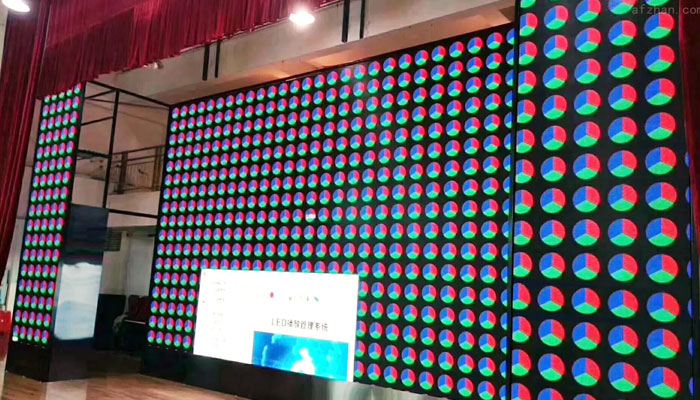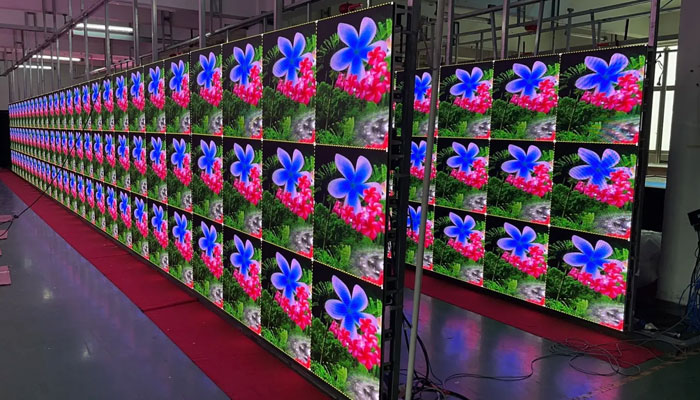Before purchasing and installing an LED screen, the screen size is a critical specification you must consider. How do you choose the appropriate LED screen size? We hope this article provides the answers you seek.
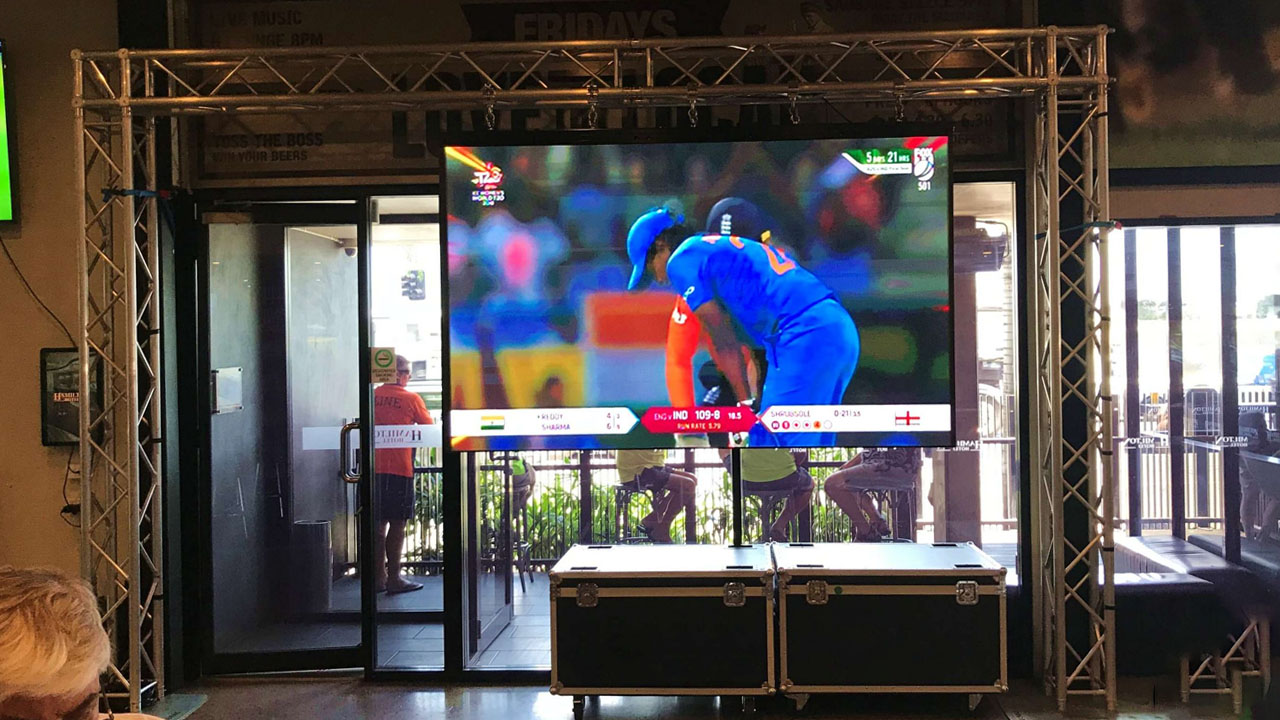
Why is it important to understand LED screen sizes?
When deciding to install an LED screen, the first step is to plan the size of the screen you will purchase.
If the LED screen is too large, it may result in insufficient installation space, causing discomfort for viewers; if the LED screen is too small, it may make the display unclear, failing to fulfill its intended purpose.
Therefore, selecting the appropriate LED screen size ensures efficient use of installation space, guarantees a satisfactory viewing experience, and helps save on purchase costs by avoiding waste from purchasing an overly large screen.
LED Screen Size Selection
LED modules and LED cabinets are the basic components of an LED screen. Some LED screens are directly assembled using LED modules mounted on a steel structure, while others are assembled using LED cabinets made from LED modules.
LED Module Sizes
Common standard LED module sizes available on the market include 320×160mm, 250×250mm, 240×240mm, 192×192mm, and 160×160mm.
In addition to these standard sizes, LED modules also support custom sizes. You can communicate with the manufacturer to discuss the production dimensions of LED modules based on your specific requirements.
However, choosing standard LED modules will result in a faster production cycle and more cost-effective pricing.
LED Cabinet Sizes
LED cabinets are typically rectangular, such as 500×1000mm, 800×1200mm, 750×250mm, and 640×480mm. There are also some square cabinets, such as 480×480mm, 500×500mm, and 1000×1000mm.
In addition to these standard sizes, custom sizes are also available upon request.
LED Screen Size
Selecting different LED module sizes and cabinet sizes will have an impact on the final LED screen size.
The final installed LED screen may not exactly match your ideal dimensions but will be slightly larger or smaller than your ideal size depending on the LED module or cabinet dimensions after assembly.
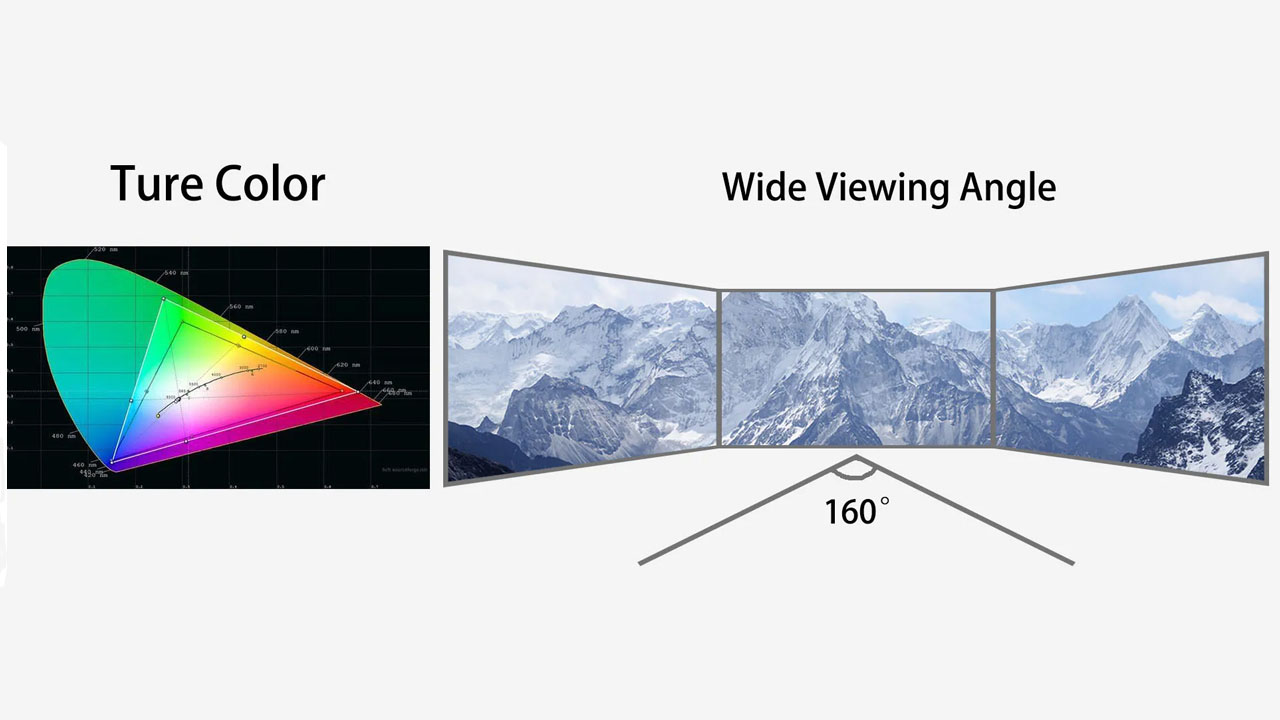
Calculating LED Screen Size
Using Width and Height (Standard Rectangular Method)
If your LED screen is a standard rectangle, and you have sufficient measurement conditions, you can directly measure the width and height of the LED screen to calculate its size.
Formula: LED Screen Size = Width × Height (units)
Note that when using this formula, you can use multiple units of measurement such as millimeters, centimeters, or meters, but you must ensure that the units for width and height are consistent.
By Cabinet Size and Number of Cabinets
When the LED screen is too large for manual measurement, you can also calculate the LED screen size using the dimensions and number of cabinets used to assemble the LED screen.
Formula: Cabinet dimensions = Cabinet width × Cabinet height
LED screen width = Cabinet width × Number of cabinets
LED screen height = Cabinet height × Number of cabinets
LED screen size = LED screen width × LED screen height
By pixel pitch and pixel count
Generally, if you know the resolution of the LED display, you can determine the number of pixels in the horizontal and vertical directions. Then, based on the pixel pitch of the LED screen, you can calculate the LED screen size.
LED screen width = Horizontal pixel count × Pixel pitch
LED screen height = Vertical pixel count × Pixel pitch
LED screen size = LED screen width × LED screen height
Applicable to non-rectangular screens (curved/custom shapes)
Calculating the size of non-rectangular LED screens is more complex, especially since some non-rectangular LED displays are often composed of multiple LED screens of different shapes.
In such cases, you need to calculate the area of each LED screen individually and then sum all the areas to obtain the total area.
The formula for converting the total area into the area of a similar square is the LED screen size.
LED Display Dimensions and Applications
Large LED Display Dimensions
Most large LED displays are used outdoors, as outdoor spaces offer ample room, accommodate large audiences, and allow for viewing from a distance—all of which align with the viewing characteristics of large LED screens. Outdoor large LED displays are commonly used for large billboards, sports event broadcasts, and similar applications.
Indoor large LED displays are also in demand, typically used for stage performances, large meeting rooms, and similar applications.
Medium-sized LED display Sizes
Medium-sized LED displays have a wide range of applications and can be used in almost any display field, whether indoors or outdoors, for large or small events. The usage frequency of medium-sized LED displays is very high.
Medium-sized LED displays are commonly used in meeting rooms, trade exhibitions, shopping malls, and various other types of venues.
Small LED Display Sizes
Small LED displays are suitable for small spaces where viewers are in proximity to the screen, such as advertising signs in shopping malls or small meeting rooms.
These close-range LED screens can also be equipped with touch technology to enable interactive experiences with viewers, enhancing the viewing impression.
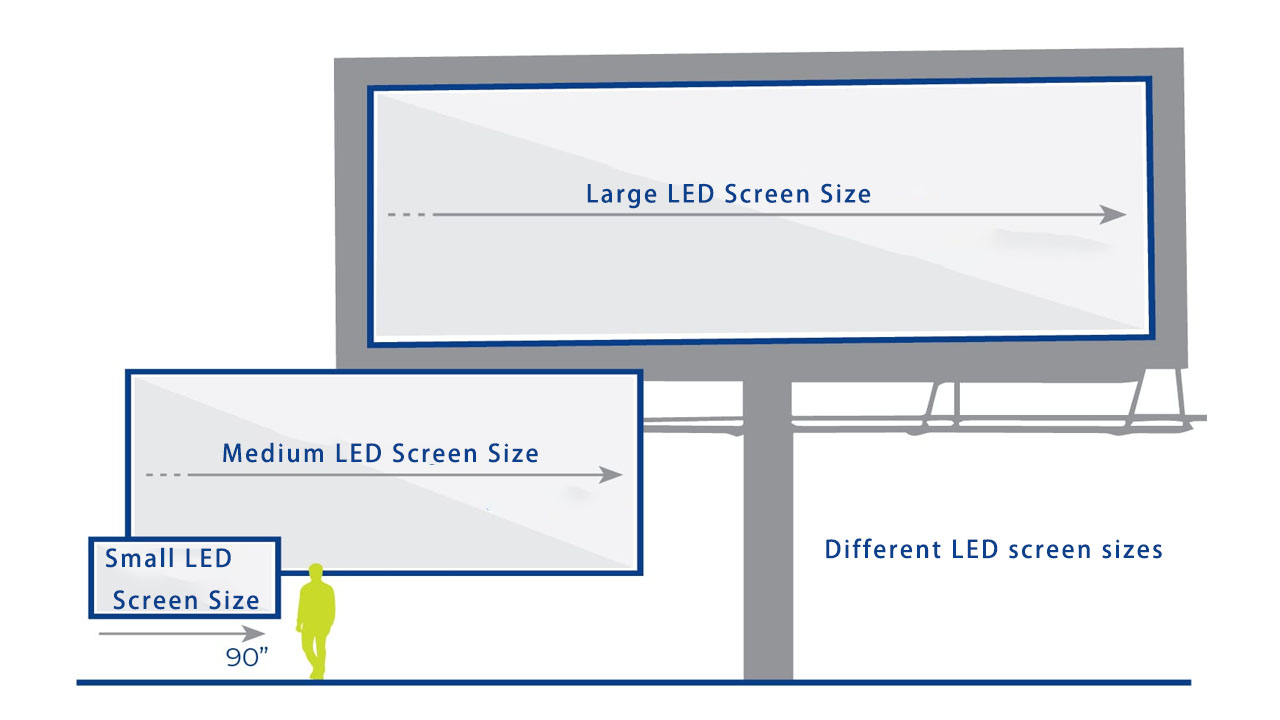
Factors Influencing the Selection of LED Screen Size
Installation Environment Space
In indoor environments with limited installation space, it is advisable to avoid selecting LED screens that are too large, as this could result in excessive space occupation and hinder pedestrian traffic.
In outdoor areas with more spacious installation environments, it is important to ensure that the LED screen size and pixel pitch align with the viewing requirements of the audience in the venue.
This prevents situations where the screen is too small at a distance, leading to poor visibility for viewers.
Resolution and Pixel Pitch
The larger the pixel pitch of an LED screen, the greater the suitable viewing distance. Generally, LED screens with larger pixel pitches require larger screen sizes to ensure sufficient resolution and avoid blurry or unclear images.
Purpose of Use
The purpose of installing the LED screen—whether for playing movies, stage performances, or as an outdoor advertising sign or information display board—will determine the appropriate screen size.
For movie playback, a moderately sized LED screen is sufficient. For advertising signs, a sufficiently large and eye-catching LED screen is required.
The appropriate LED screen size will vary depending on the specific usage requirements.
Content Type
If the content source is high-definition dynamic video, a larger-sized LED screen with higher resolution is required to serve as the content source player to fully convey the content information.
If the content source is simple text or images, a smaller-sized LED screen is sufficient.
Budget
The price of an LED screen is closely related to its size, pixel pitch, and other performance specifications. When considering installation, you must confirm whether the budget for the selected size aligns with your expectations.
If the budget is exceeded, you may need to compromise on the LED screen size or other specifications to reduce the purchase cost.
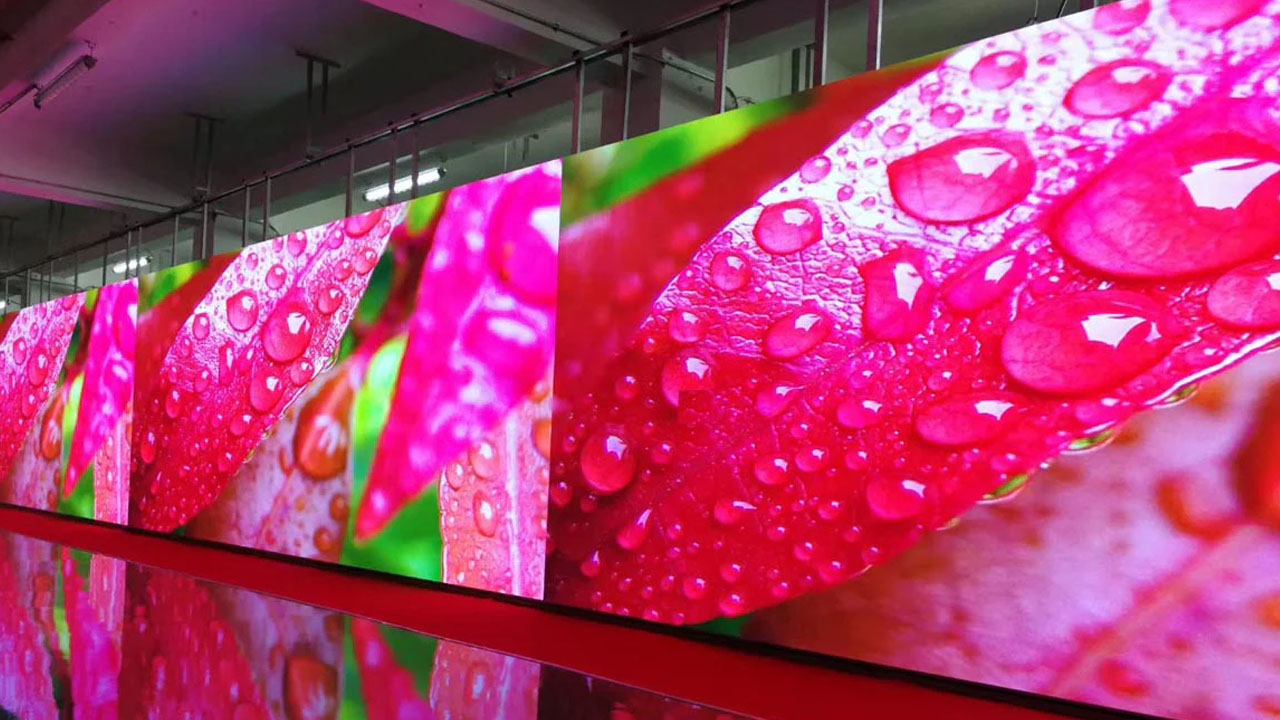
LED Screen Aspect Ratio
LED screen sizes can be customized freely. If the customized aspect ratio aligns with modern common video aspect ratios, it ensures better playback quality of the content source on the LED display.
4:3 LED Screen Size Ratio
In the past, people primarily used 4:3 displays to play videos, which is a more traditional aspect ratio format. Currently, some government departments or older hospitals still use 4:3 displays.
If the purpose of installing the LED screen is related to these traditional videos, you may consider this aspect ratio.
16:9 LED Screen Aspect Ratio
In today’s rapidly developing information age, most movies, TV shows, and streaming videos on social media platforms are produced using the 16:9 aspect ratio.
16:9 is the standard aspect ratio for video content production across many industries. If your application is related to these fields, you may consider installing an LED screen with a 16:9 aspect ratio.
LED Screen Aspect Ratio Calculation
LED screen aspect ratio formula = LED screen width : LED screen height
For example, if you install an LED screen with a width of 6 meters and a height of 2.5 meters, the LED screen aspect ratio = 6:2.5 = 12:5
Conclusion
The size of the LED screen is crucial for your viewing experience. Installing an LED screen with an inappropriate size may result in unclear visuals or make the installation space appear cramped and crowded.
After reading this article, you should have a better understanding of LED screen size selection and feel more confident in choosing the appropriate size.
FAQ
What is the optimal LED screen size for indoor use?
The common viewing distance for indoor LED displays is 2–6 meters, so the appropriate pixel pitch is 2–3 mm.
For example, for a 720p resolution display, the optimal size for an indoor LED display is 2.56 × 1.44 meters.
What is the optimal LED screen size for outdoor use?
Outdoor viewing distances vary significantly, so the appropriate LED screen size should be selected based on actual viewing distance and pixel pitch considerations, and the optimal size, should be determined according to specific requirements and budget constraints.
What are the common units of measurement for LED screen sizes?
Common units of measurement for LED screen sizes include millimeters, centimeters, meters, inches, and feet. When selecting and comparing options, it is important to convert known measurement units into units you are more familiar with to better understand the size concept.
Can LED screens be customized to any size for any space?
Yes, LED screens are customizable. Both the base module size and cabinet size can be customized. Simply specify your requirements, and the LED screen’s size and shape can be tailored accordingly.
Will larger LED screens be more expensive?
Under identical specifications, the larger the LED screen size, the more expensive it will be. However, if there are significant differences in specifications and performance, size is not the only factor affecting price. For example, a 1×2-meter P1.667 LED screen will be more expensive than a 2×2-meter P4 LED screen.


